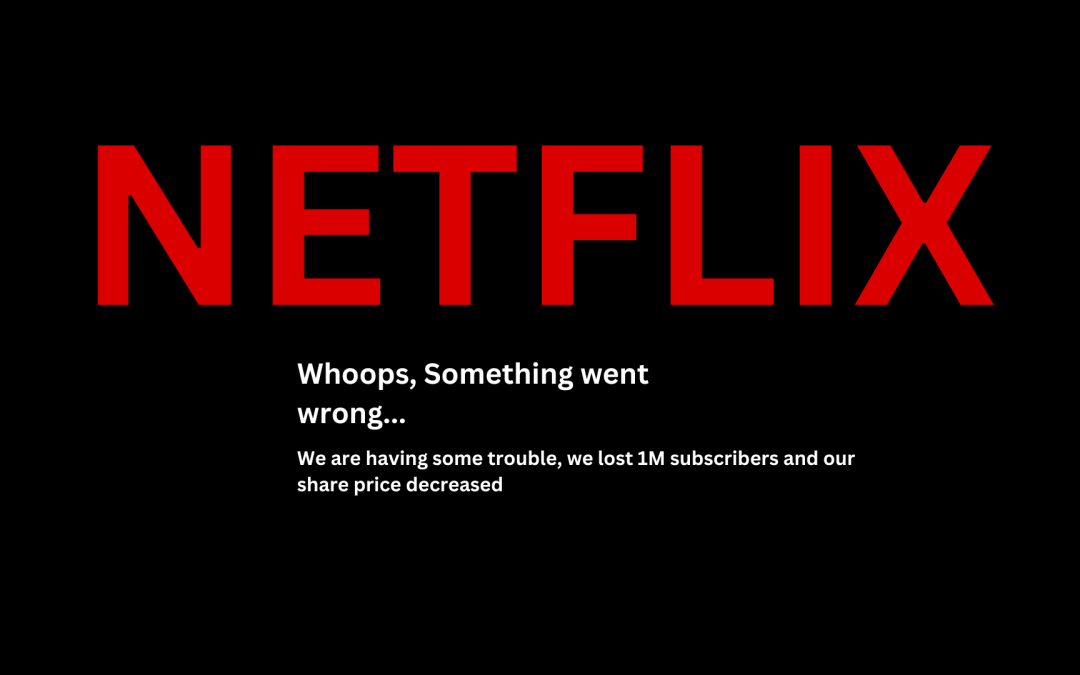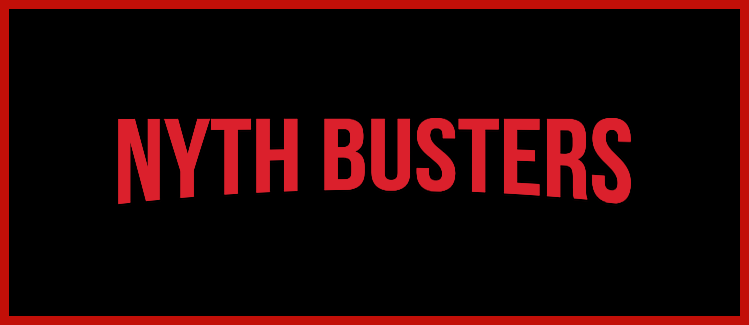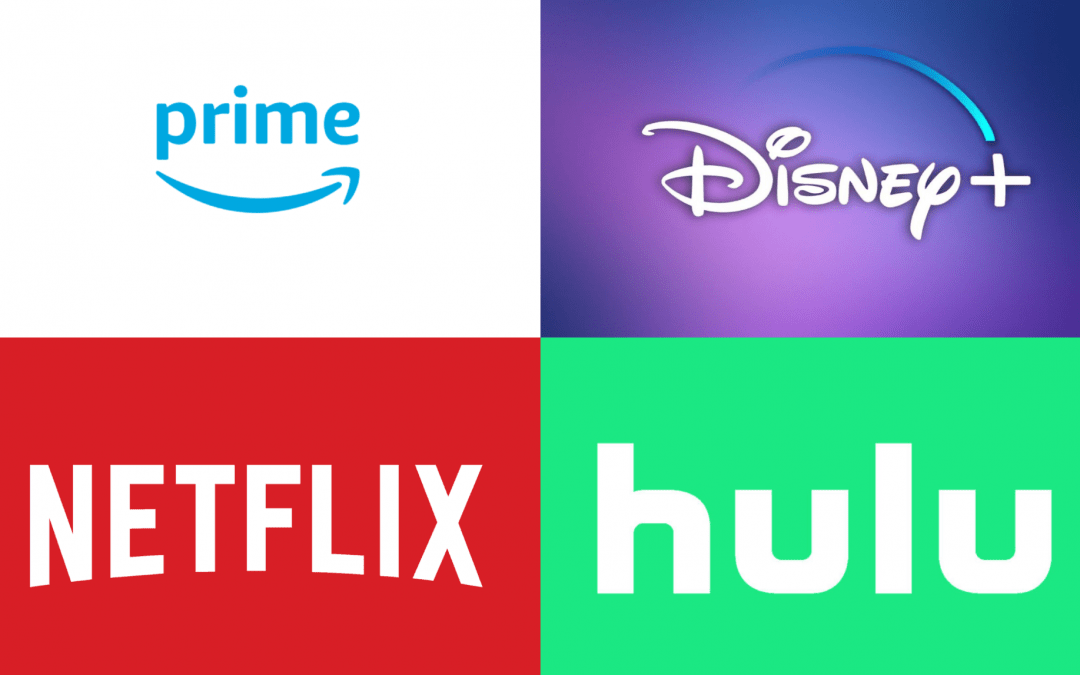
by eaa37 | Nov 15, 2022 | Dashboard, Team Project
Contributors: Aya Zeini, Baraa Abo Ghouch, Eslam Abo Al Hawa, Layan El Kaissi, Marian Abou Fares, Mhammad Nahle.
For the past 25 years, Netflix has always been the largest streaming service in the world as it holds more than 10% of the global internet traffic. New players have joined the competition and they are growing rapidly, and the question is: How will Netflix be able to maintain its dominant position?
In Q1 2022, Netflix lost around one million subscribers, and this was the first drop in number of subscribers for the past 10 years which led to a huge drop in its stock price and market share as it went down from 690.3 till 190.4 within 7 months only. On the other hand, Netflix income has always been increasing especially from 2022 as it was 2,219 where it became 4,500 but in 2022 it decreased for the first time by 1.6% and this is where they felt there is an urgent need for call of action.
One of the problems Netflix was facing is relying on licensed titles which counts for 97% of the content in 2016. After they started losing those licensed titles, they had to remove them which led to losing a lot of subscribers. ‘Criminal Minds’ is the top-watched licensed show on Netflix as of 2021 and it was later removed due to licensing issues which was disappointing to Netflix users and as per our survey, 51% users canceled their subscription after they hooked on a Netflix series and found it was removed. By 2022, they increased the percentage of produced original titles by 50%. They followed this strategy of spending a lot of money into making originals to fuel their subscription growth especially after subscribers began to hemorrhage.
Netflix is also struggling from the competition. In Q2 2022, Disney platforms had 27.3% (year over year) growth of subscribers compared to 5.5% for Netflix. Can you imagine their growth in coming years?
Despite the fact that Netflix is struggling to maintain its trajectory, they still have the biggest overall subscribers base and have a history of innovation that is going to be very difficult for any competitor to defeat. Currently, Netflix is planning to introduce a cheaper membership that includes advertising to grasp more subscribers. Although this is a good step to start with, but they still have to work at being nimbler and more dynamic with packaging and bundling so most people don’t like to be distracted by adds while watching and this has been validated in our survey. At the same time we found out that 72% of our surveyed Netflix users 72% aren’t willing to switch to another platform and 82% said they enjoy original titles produced by Netflix.
This proves the point that Netflix users are loyal and didn’t give up on the platform but rather they demand improvements to meet their needs. Therefore, if Netflix can continue to produce original titles that creates a significant reaction from users and impress them, users will find value in their membership. Moreover, investors should keep an eye out for Netflix’s following releases and viewership to see if the platform is still breaking records and satisfying viewers. This is a streaming war, if Netflix decides to resist and fight back, the chances of Netflix falling below their competitors are slim.

by nae51 | Apr 28, 2022 | Uncategorized
Contributors: Abdel Rahman Al Estwani, Sara Al Nesany, Lea El Halabi, Nour El Saadi, Hadi Sleiman, Charles Wakim
Netflix is today’s world’s leading streaming entertainment service. With very humble beginnings, Netflix grew enough to successfully overcome Blockbuster. It then grew enough to fall in the loop of corporate greed and use social causes for its own growth.
Yes, read what you just read again… If you do not see what we are trying to say, here’s a quick video that summarizes our claims:
So our aim is to debunk the myths that shape a positive image of Netflix. It is not what it pretends to be. That said, we would rather take you down a quick story to walk you through our findings… and How we found them… To do that, please enjoy our Streamlit dashboard:
While we are sure Netflick$ won your hearts at first, we are also sure that you were left revolted by Netflow$’s greed. That said, we do not undermine the strategic mind of Netflick$ who quickly turned into Netflow$… In fact, Netflix’s strategic use of time and social causes to grow their public interactivity enabled them to create noise around them. For instance, when anger spurred because of the representation of a gay character in a Turkish Netflix show, people convened to watch the show on Netflix. Indeed, any publicity is good publicity.
While we have focused on LGBTQAI and BLM causes, we do also acknowledge that Netflix has most probably used the same strategy with other minority groups, and will probably still continue to capitalize on social causes- be it the ones we mentioned or others. It is Netflix’s way of being trendy and riding the wave, and it sure helps them grow (as you saw on the documentation). We strongly denounce these uses. Nonetheless… if we were to pass one message to Netflix it would be the following: you might indeed capitalize over minorities and social causes, but at least, at the very least, improve the quality of the titles you add to your ‘social cause’-related categories… improve your representations of these minorities that suffer… you can capitalize, but at least make it worthwhile and properly help the minorities…
We leave you with your conscious to decide how to proceed with everything you just learned…
Do let us know what you think and follow us on Instagram to stay updated and debunk other nyths 🙂

by Paul Nassif | Apr 7, 2021 | Dashboard, Visualization
The cord-cutting phenomenon is quickly gaining traction with the advent of COVID-19. Apart from its bothersome commercials and restricted programming, cable TV demands a taxing average rate of $100 per month from its subscribers (CNET, 2019). While more than 31.2 million households have abandoned classic cable in 2020 (TechCrunch, 2020), streaming services have witnessed soaring sign-up rates thanks to their affordable pricing, diverse offerings, and flexible on-demand schemes. For example, Netflix alone received 16 million new subscribers in merely the first quarter of the same year (BBC, 2020).
Yet, as with many cases of consumerism, people might feel overwhelmed by the abundance of choices (American Psychological Association, 2004), and it might be difficult to make informed decisions. Put simply, how may consumers select the appropriate streaming service(s) when more than 100 of them are at their disposal? (CNET, 2019). To mitigate the risk of “streaming service overload” (CNET, 2019), whereby individuals misguidedly drive up their costs by subscribing to numerous services, our team is interested to explore, compare, and contrast the offerings of popular streaming services (Netflix, Hulu, Disney+, and Amazon Prime).


